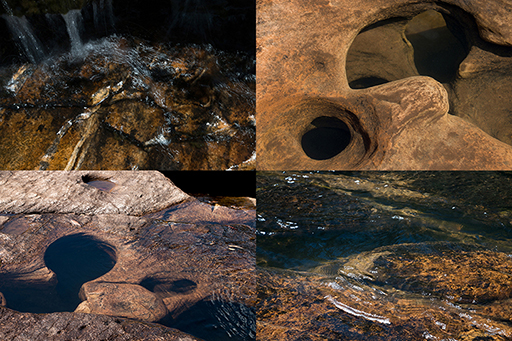

eports from Tibagi Valley prospectors increased in the middle of the 17th century. The expedition (bandeira) of Fernão Dias Paes, the Emerald Hunter, through Serra de Apucarana between 1661 and 1665, found no precious stones, but caused the Paulistas to entertain the possibility that gold might be found in the region. A group of bandeirantes led by Miguel Sutil founded Santa Cruz do Sutil Hamlet in Palmeira, where a chapel was built in 1699, a sign that there must have been a considerable population in the area. Those bandeirantes were soon prospecting in Mato Grosso, where they were among the founders of Cuiabá.
Between 1707 and 1709 an expedition of Jesuits passed though Campos Gerais in search of available resources for economic exploitation in order to raise money for completion of Colégio de Paranaguá. The priests established themselves on the banks of the creek running between Pedra Grande Hill and Cerrado Grande, in the current Itaiacoca District in Ponta Grossa, where they concentrated on prospecting for gold. Their activities led to many legends and rumors of hidden treasure.
Diamonds were discovered in the immediate vicinity of the Pedra Branca ridge in Tibagi by Angelo Pedroso Leme e Frei Bento de Santo Angelo, who had been exploring the region since 1748. A great dispute over exploitation rights began. One of the oldest cartographic documents pertaining to the Campos Gerais region is dated 1775 and is entitled Mappa do Certam do Tibagi riquissimo de averes assim de oiro estanho fino e antimônio excellente como de fertiz campos pa se criar animaes (...). It was commissioned by Angelo Pedroso Leme, who hoped to demonstrate to the authorities the occupation and search for ores already taking place in the region, and to obtain privileges related to the exploitation of natural resources, thus strengthening his rights as discoverer. The map shows the major rivers, paths and ridges, and localizes Leme’s “rossa” (old spelling of roça, field for planting) near Pedra Branca Hill, which today is called Jacaré Hill, in Tibagi.
A platoon sent by Câmara de Curitiba to watch over Pedra Branca and control mineral extraction existed over many years as an item in the Registro de Nossa Senhora do Carmo, by the mouth of the Capivari River. Because diamond extraction was monopolized by the Portuguese Crown, exploitation must have followed rigid norms. Attempts to avoid control were not uncommon. Both sertanistas and sesmeiros (who used their slaves in extraction) were implicated, and there were several cases which led to imprisonment. The search for gold and diamonds always happened sporadically and used the simplest means. The bateia, a shallow pan much like the one used by California prospectors to wash gold and diamonds out of sediment, was the principle implement. During the 19th century, there were many people looking for gold and diamonds, such as Martim Francisco Ribeiro de Andrada, who was in the region in 1802 to examine the Monjolo, Faisqueira, Fortaleza, São Domingos, Santa Rosa, Borges streams and both banks of the Tibagi River. He wrote a detailed report in which he described the diamonds that were found.
Early in the 20th century, Tibagi received a great influx of prospectors from Northeastern Brazil. They established themselves in the region and brought new methods, such as using deep sea diving suits in the extraction of diamonds. These suits and other equipment used at the time can be seen in the Edmundo Mercer Historical Museum, also known as the Tibagi Prospecting Museum.
Currently, consession are given by the National Department of Mineral Production. But the older means of prospecting are still used, especially in periods of drought, when panning becomes easier in the shallow pools formed in the riverbeds.
click on picture
to enlarge